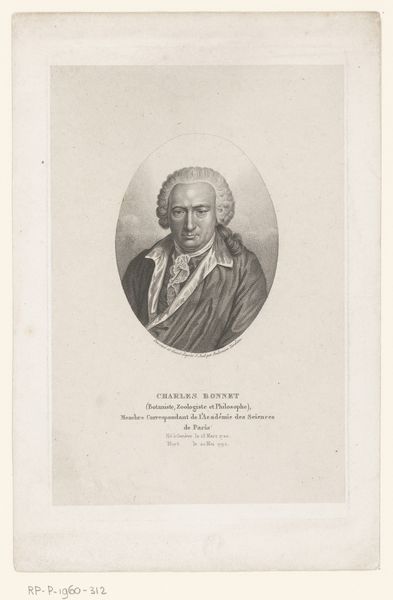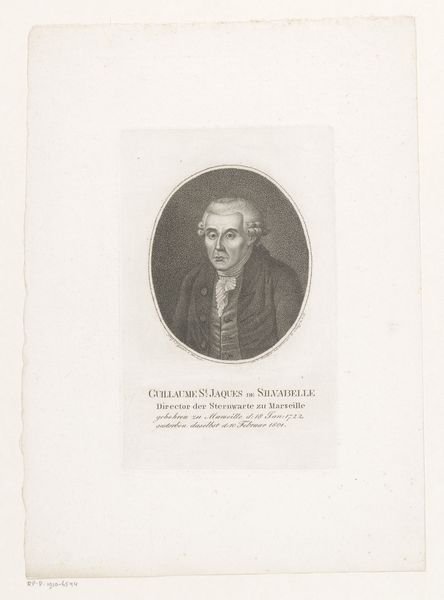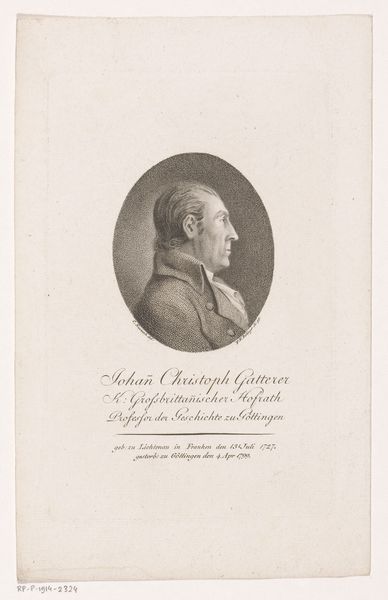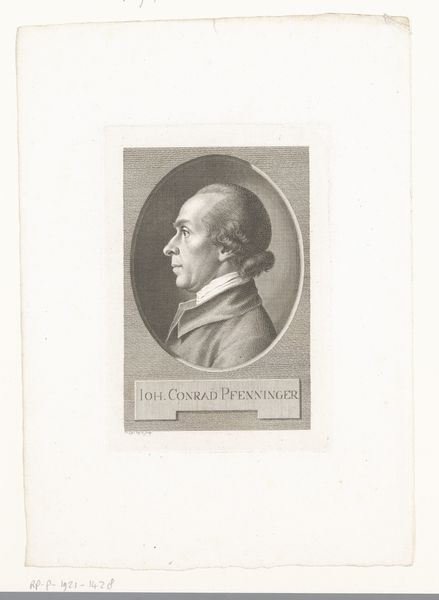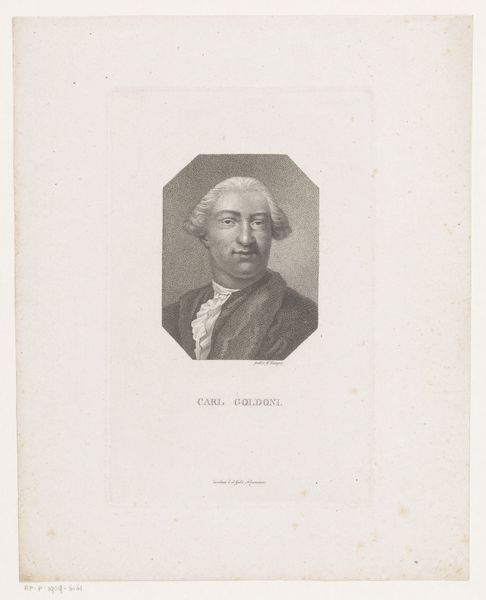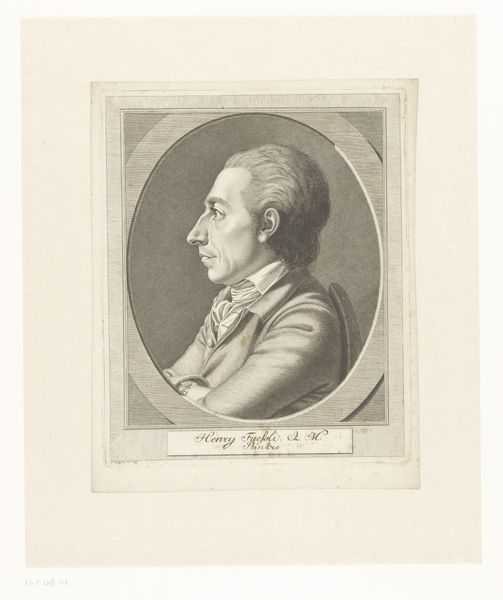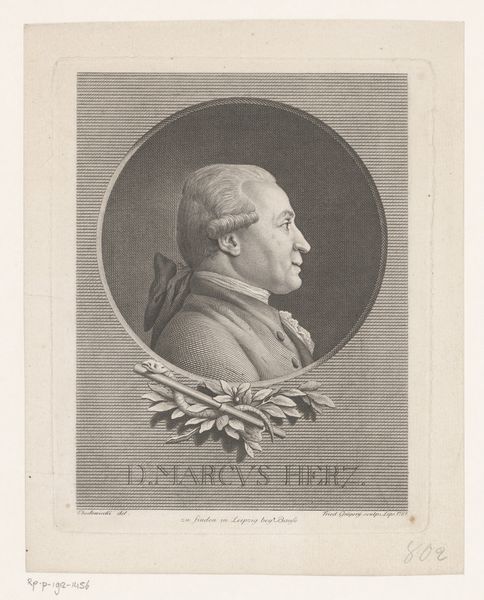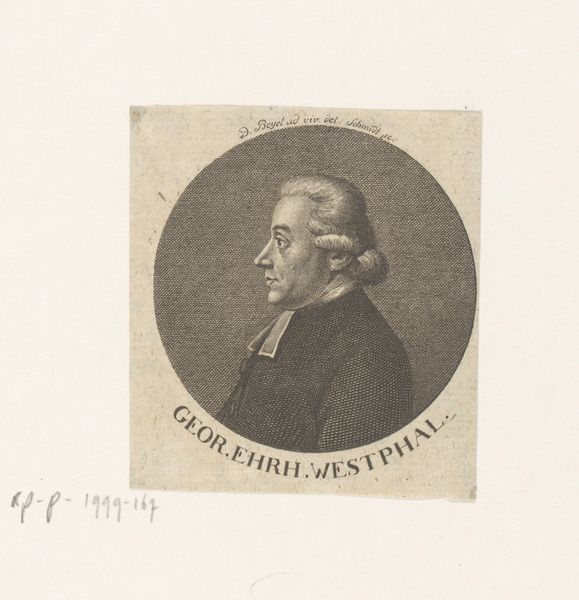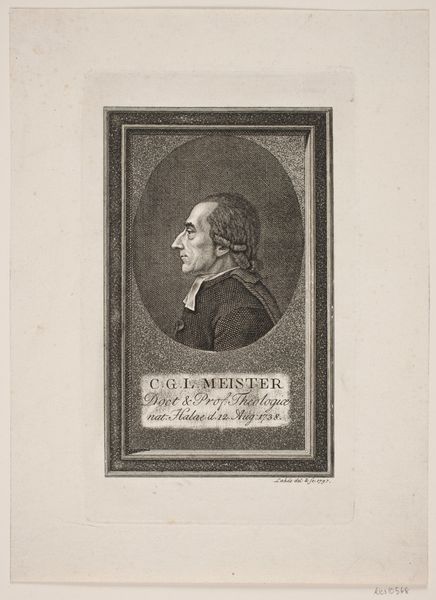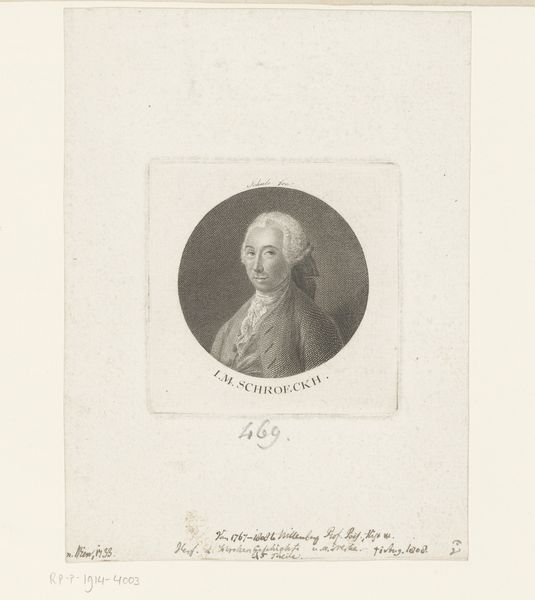
#
portrait
#
neoclacissism
# print
#
historical photography
#
realism
Dimensions: height 175 mm, width 134 mm
Copyright: Rijks Museum: Open Domain
Editor: So this is a print entitled "Portret van Johann Caspar Haefeli" by Johann Heinrich Lips, made sometime between 1811 and 1817. The sharp lines and stark presentation make me feel like it's trying to capture a very objective truth about the sitter. What do you make of this portrait, especially considering the historical context? Curator: This print exemplifies the Neoclassical revival of portraiture. It's a public declaration of a man's character, shaped by Enlightenment ideals. Look at the clean lines and the sitter’s stoic expression. Lips is channeling a visual language of rationality, inspired by ancient Greek and Roman art, aiming to communicate a sitter of importance to the wider population. Given that the piece is a print, not a painting, what can we infer about its potential audience? Editor: That it was probably made to be widely distributed. That gives the image more impact. It is a powerful piece of propaganda of sorts then. How do you see the medium – a print – influencing its reception in society at the time? Curator: Exactly! The choice of print suggests a desire to disseminate this image broadly. In an age before photography, prints were key tools for constructing and circulating ideas about public figures. Its purpose might have been less about personal commemoration, more about projecting an image to reinforce civic values or the subject’s status within a broader public sphere. Editor: That’s fascinating; I had never considered the deliberate construction of identity through printmaking as a form of early public relations! Curator: Precisely. Examining how this image was circulated allows us to analyze its social role – how it contributed to the formation of public opinion, and shaped perceptions of individuals within a particular social and political context. Editor: That is definitely a different way of looking at portraiture. Now I have a better appreciation for the choices that Lips made, in order to shape society’s view of this important personage, especially the role of art at the time! Curator: Indeed, by considering the societal context, the print moves from a mere image to a valuable piece of cultural history.
Comments
No comments
Be the first to comment and join the conversation on the ultimate creative platform.
